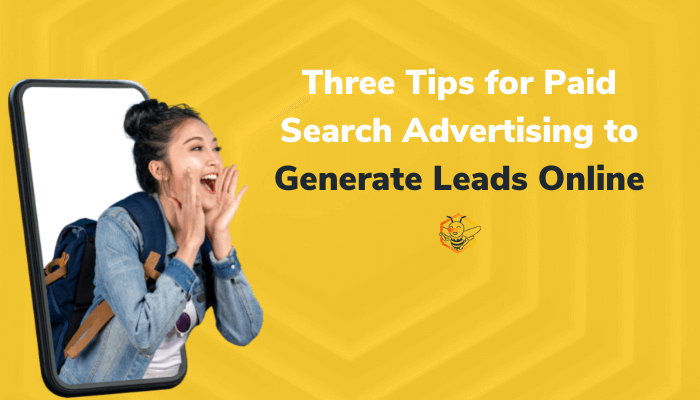Pay-Per-Click (PPC) can be a very effective marketing strategy if done well. PPC advertising can drive significant highly targeted traffic back to your website, but it can also be expensive and unfruitful if you’re not investing the time into building an effective paid advertising strategy. So how do you know if your PPC campaign is actually working? How do you determine and measure ROI? Let’s start at the beginning.
What does a successful PPC campaign look like?
A pay-per-click campaign can be a powerful digital marketing tool for a number of different purposes. If your goal is to drive brand awareness, you can simply look at the number of clicks. You can also use it to drive traffic to your website and analyze your website metrics. If you are selling a product or a service, you will eventually need to look at the rate of conversions via PPC. An important factor to consider is that the PPC campaign will only bring them to your site or landing page. The actual conversion is strongly dependent on how well the landing page is designed. The better the user experience, the higher the chance of conversion. Linking to Google My Business for local services and linking to Google Merchant Center for ecommerce is an additional way to increase your conversion rate and therefore lead generation and sales.
Tip #1: Adding Negative Keywords
A negative term ensures that your ads do not show meaning that you will not pay for terms related to that negative term. For example, if you sell “National Potato Chips”, many things are named National like the car rental company. So a negative term for your campaign would be -car -rental this can save you thousands of dollars in bad users as chips have nothing to do with car rentals and they are such a large brand it would eat up your budget every day without the negative terms.
Tip #2 Click-Through-Rate Vs Quality Score
Click-through-rate (CTR) is calculated by dividing the number of clicks by the number of users that have seen your ad. CTR is an important factor in determining the “quality score” of your campaign which is even more important in the big scheme of things because the quality score is a factor in whether you or a competitor win the bid. You see, Google cares about the experience as well. If you provide a good user experience, meaning your ad content and page content are aligned and the visitor will get what they expect on the destination page, then you are a more valuable partner to Google – i.e. can help them make more money. In turn it will also help you make more sales as well.
How does Google Determine Quality Score?
Google determines your quality score by measuring three components.
- Expected CTR
- Ad relevance
- Landing page experience
Ad relevance is determined by how well the keywords on your landing page and website match your ads. The landing page experience refers to the user experience we mentioned earlier. This means that in order for your PPC campaign to be optimally effective, the landing page users are being sent to has to be search engine optimized.
Tip #3 Use those Google Ad Extensions
Taking up space is the name of the game in search ads and utilizing extensions in the cheat code. Real estate on a search engine results page is super valuable. It may feel like cheating, but Google rewards those who build out as many extensions as possible and to their fullest extent.
Google’s Ads extensions include:
Ad extensions are a Google ad features that show extra information about your business below your ad, like an address, phone number, store rating, or more webpage links. Site Links, Callouts, Phone Calls, and Lead Forms are the most popular site extension. If you have a local business the Location Extension is a link to Google Business and is the most important extension as it will serve your ads automatically on Google Maps.
Though Google will choose which extensions to include on your ads, and in which order, having as many of them completed in your Google Ads account as possible means you’ll take up more real estate and gain the attention of more leads, thereby also increasing your potential for click-throughs.
PPC can be a very effective digital marketing strategy to generate leads online when used correctly, but can easily become a victim of wasted spend. You have to target the right users in the right markets using the right keywords and maximize your ad tools to gain qualified leads. If all those factors are in order you will be halfway there. The second half is ensuring your website and lead nurturing infrastructure can handle an increased volume of leads that are in the consideration stage vs the decision stage of the buyers journey. Getting attention is great, but if you don’t convert those visitors, it’s pretty pointless.




.png?width=100&height=100&name=Why%20Were%20Not%20a%20Marketing%20Agency%20(And%20What%20That%20Means%20for%20Your%20Growth).png)
